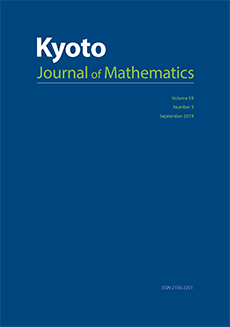Abstract
We construct spherically symmetric solutions to the Einstein–Euler equations, which give models of gaseous stars in the framework of the general theory of relativity. We assume a realistic barotropic equation of state. Equilibria of the spherically symmetric Einstein–Euler equations are given by the Tolman–Oppenheimer–Volkoff equations, and time-periodic solutions around the equilibrium of the linearized equations can be considered. Our aim is to find true solutions near these time-periodic approximations. Solutions satisfying a so-called physical boundary condition at the free boundary with the vacuum will be constructed using the Nash–Moser theorem. This work also can be considered as a touchstone in order to estimate the universality of the method which was originally developed for the nonrelativistic Euler–Poisson equations.
Citation
Tetu Makino. "On spherically symmetric solutions of the Einstein–Euler equations." Kyoto J. Math. 56 (2) 243 - 282, June 2016. https://doi.org/10.1215/21562261-3478880
Information





